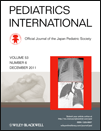Increase of child car seat temperature in cars parked in the outpatient parking lot
Abstract
Background: A guideline for the safe use of child car seats (CS) was published by the Japan Pediatric Society in 2008. There have been few studies of the increase of temperature of a CS in parked cars. The aim of this study was to determine the change in the temperature of the CS in cars parked in full sun.
Methods: The temperature of CS was measured during summer (July and August) in 2006, 2007, and 2008. The CS used in this study (n= 50) were for children (≤6 years old) who were taken by car to Sugimura Children's Medical Clinic. Temperatures were only measured on sunny days. Measurements were performed from 09.00 to 17.00 hours. Thermochron (Thermochron i-Button: G type, Maxim Integrated Products, CA, USA) was used to measure the temperatures. The maximum temperatures of CS were compared in time at the clinic, taking into consideration seat colors, and car colors.
Results: Of the 50 cars, three cars were excluded due to being in the shade while the temperature was measured. A total of 47 cars were used for this study. The temperature of the CS ranged from 38.0 to 65.5°C (47.8 ± 5.8°C). Eighteen CS (38.3%) reached a temperature of 50°C or above. The maximum temperature of the 13.00−15.00-hours group was significantly higher than that of the 09.00−11.00-hours group (P= 0.035). The CS temperatures in the black car group were significantly higher than those of the white car group (P= 0.013).
Conclusion: CS may become very hot while a car is parked in sun, especially if the car and the CS are black, so the CS should be cooled before a young child is placed in it. Guardians of small children should be aware of this risk.




